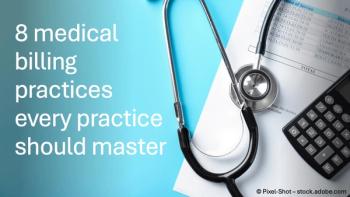
Improving Charge Capture at Your Medical Practice
When considering charge capture, it is important to be proactive to avoid missing revenue opportunities.
It is challenging for medical practices today to maintain revenue, not to mention increasing profits. Practices have had to become creative in ways to increase patient volume seen in a day and think of new opportunities and service lines to substitute for decreases in fee schedules and increases in expenses (e.g., EHR technology and training). Given that these challenges are not expected to change in the nearing future, it is imperative to seize revenue opportunities.
More importantly, we need to ensure we are not overlooking unbilled encounters or missing charges for all services provided. When considering charge capture it is important to be proactive. Being proactive includes internal controls, proper policies and procedures and auditing process to ensure they are not only in place but being utilized.
Internal controls are critical in being proactive in the charge capture process. Internal controls include appropriate processes and procedures starting at the beginning of the process (scheduling) and continuing through the final steps (claim adjudication). Many times scheduling is not considered a key player when it comes to charge capture, but it is by far one of the best reconciliation tool available.
Scheduling all appointments or services (e-visits, inpatient consults, nursing home visits, injections, and nurse visits) provided by the practice in the scheduling software allows the practice to reconcile charges billed to services scheduled. Many practice management software has reporting functionalities that will identify unbilled charges. The reports can assist with determining if an encounter has been created but not billed or an appointment is created but not kept (which could be an appointment not kept or an appointment that was kept but not registered properly). Many times practices will schedule services provided in the clinic, but not outside the practice such as inpatient consults or nursing home visits. Unfortunately, services such as inpatient consults are most commonly missed since there is not anything to reconcile back to and so often face sheets and superbills sit in the provider’s vehicle or are lost in another fashion.
Creating a procedure and/or policy for all scheduling to go through the practice gives the billing department the ability to know if they are missing a fee ticket or charges. For unexpected visits or services such as inpatient consults, it can be sometimes challenging since many times it is dependent upon the provider to notify the practice. This is especially true if the provider consults at more than one hospital or facility.
Keeping track of when and where the providers are on call helps verify whether consultations were performed or not. Hint: Keep the calendars for at least one year from the time of service in case verification is needed on dates of consultations.
More importantly, education, training and providing appropriate resources are crucial for obtaining charge information from providers. Keep in mind many providers today are compensated by a base salary, productivity and collections. For example, if a provider is on call one week a month for a hospital and performs 10-20 consultations during that timeframe and is reimbursed approximately $100 per consultation, a 25 percent leakage could cost the provider roughly $250-$500 a month or $3,000-$6,000 annually in just consultation fees alone. Once the provider is educated on how a missing consultation or service can affect their compensation they are more apt to put forth effort to ensure the practice receives the information needed to perform billing functions.
The process put in place can be as simple as the provider calling the practice and leaving a message on a designated secure voicemail, including the patient information, services provided, diagnosis codes, and recalls. Or, the process can be more complex, utilizing the more advanced technology available today such as mobile software that allows the provider to enter the patient demographics and visit information on their iPad or other electronic device. The device then communicates the information to the practice’s EHR. Regardless of the chosen method or process that the practice decides on using, the most important part is implementing and verifying the policies and procedures are being followed.
Once the policies and procedures are implemented the practice needs to perform a charge-capture audit to make certain the proper internal controls are in place and being utilized. Charge-capture audits are similar to other audits. They can be as detailed or simple as desired. It can be for a whole week’s worth of schedules or random days. The most important thing to is to do them and be consistent. If the practice’s PM system offers reporting functionalities that will identify unbilled or missing charges use it!
Newsletter
Optimize your practice with the Physicians Practice newsletter, offering management pearls, leadership tips, and business strategies tailored for practice administrators and physicians of any specialty.








